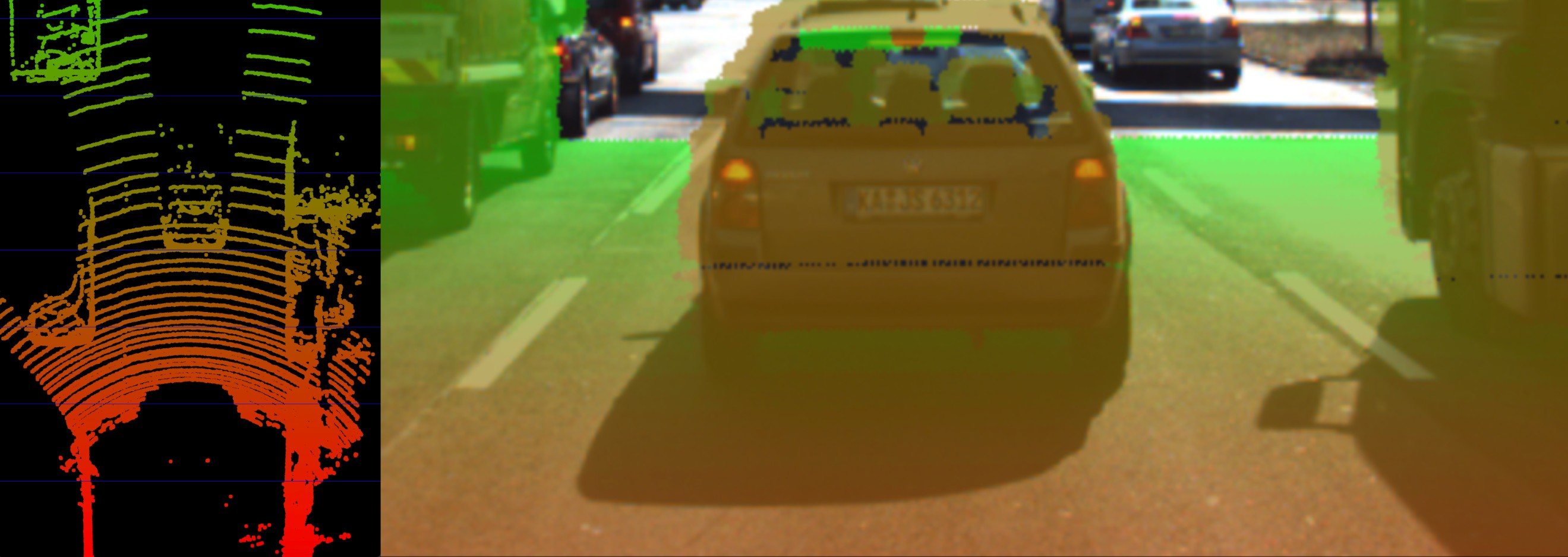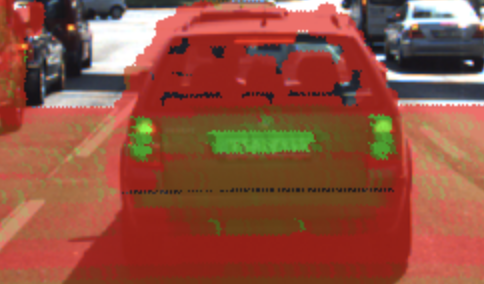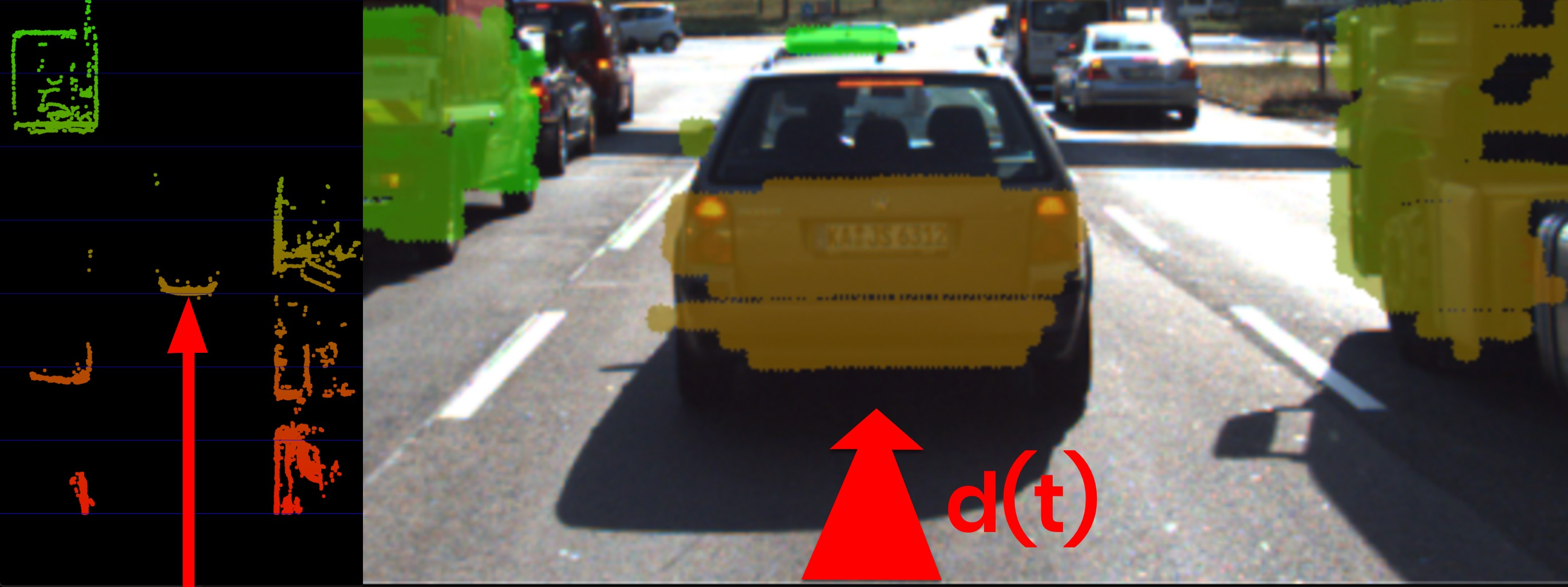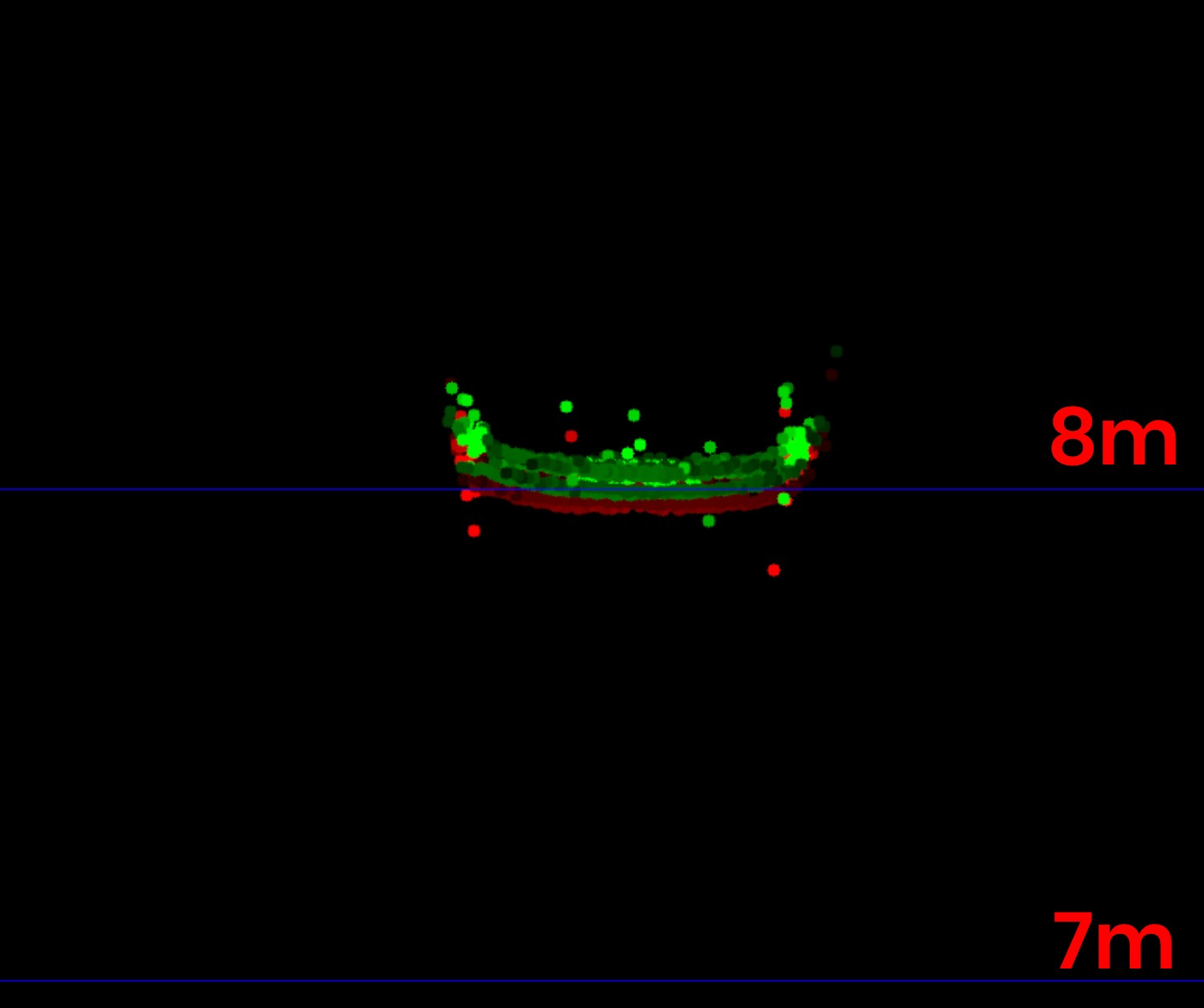Estimating TTC with Lidar
The Math Behind Time-to-Collision (TTC)
In the following, let us assume that our CAS-equipped vehicle is using a Lidar sensor to take distance measurements on preceding vehicles. The sensor in this scenario will give us the distance to the closest 3D point in the path of driving. In the figure below, the closest point is indicated by a red line emanating from a Lidar sensor on top of the CAS vehicle.

Based on the model of a constant-velocity, the velocity v_0 can be computed from two successive Lidar measurements as follows:


Preparing the Lidar Point Cloud
The following image shows a Lidar point cloud as an overlay over a camera image taken in a highway scenario with a preceding vehicle directly in the path of driving. Distance to the sensor is color-coded (green is far away, red is close). On the left side, a bird-view perspective of the Lidar points is shown as well.

As can easily be seen, the Lidar sensor provides measurements on the vehicles as well as on the road surface. Also, some 3D points in the camera image do not seem accurate when compared to their surrounding neighbors. Especially the points near the roof of the preceding vehicle differ in color from the points on the tailgate.
As measurement accuracy is correlated to the amount of light reflected from an object, it makes sense to consider the reflectiveness r of each Lidar point which we can access in addition to the x, y and z coordinates. The image below highlights high reflectiveness with green, whereas regions with low reflectiveness are shown as red. An analysis of the associated reflectivity of the point cloud shows that such deviations often occur in regions with reduced reflectiveness.

In order to derive a stable TTC measurement from the given point cloud, two main steps have to be performed:
- Remove measurements on the road surface
- Remove measurements with low reflectivity
In the figure below, Lidar points are shown in a top-view perspective and as an image overlay after applying the filtering. After removing Lidar points in this manner, it is now much easier to derive the distance d(t) to the preceding vehicle.

For now, let us assume that for each time step dt, the Lidar sensor would return the distance d(t+dt) to the preceding vehicle.
Computing TTC from Distance Measurements
In the code examples in this course, Lidar points are packaged into a data structure called LidarPoints. As seen below, the structure consists of the point coordinates x (forward), y (left) an z (up) in metric coordinates and of the point reflectivity r on a scale between 0 and 1 (high reflectivity).
struct LidarPoint { // single lidar point in space
double x, y, z; // point position in m
double r; // point reflectivity in the range 0-1
};


void computeTTCLidar(std::vector<LidarPoint> &lidarPointsPrev,
std::vector<LidarPoint> &lidarPointsCurr, double &TTC)
{
// auxiliary variablesdouble dT = 0.1; // time between two measurements in seconds// find closest distance to Lidar points double minXPrev = 1e9, minXCurr = 1e9;
for(auto it=lidarPointsPrev.begin(); it!=lidarPointsPrev.end(); ++it) {
minXPrev = minXPrev>it->x ? it->x : minXPrev;
}
for(auto it=lidarPointsCurr.begin(); it!=lidarPointsCurr.end(); ++it) {
minXCurr = minXCurr>it->x ? it->x : minXCurr;
}
// compute TTC from both measurements
TTC = minXCurr * dT / (minXPrev-minXCurr);
}Even though Lidar is a reliable sensor, erroneous measurements may still occur. As seen in the figure above, a small number of points is located behind the tailgate, seemingly without connection to the vehicle. When searching for the closest points, such measurements will pose a problem as the estimated distance will be too small. There are ways to avoid such errors by post-processing the point cloud, but there will be no guarantee that such problems will never occur in practice. It is thus a good idea to perform a more robust computation of minXCurr and minXPrev which is able to cope with a certain number of outliers (in the final project, you will do this) and also look at a second sensor which is able to compute the TTC, such as the camera.
→ In real application you could use current steering angle or curvature of the lane markings on the road to filter out unwanted points.